#Dictionnaire Infernal
Photo


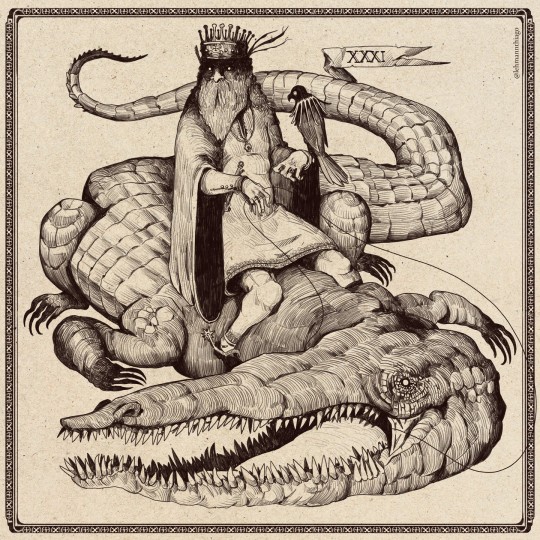


Demons by Thiago Lehmann
2K notes
·
View notes
Text
Lucifer’s Chant for Love, Beauty, Confidence, and Creativity
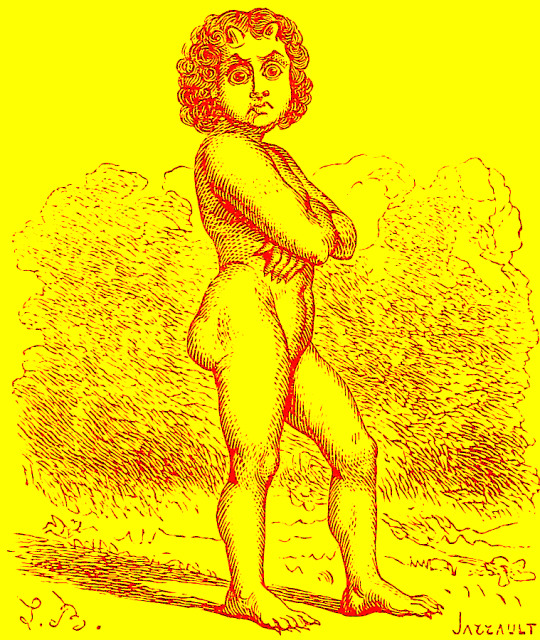
From darkness to splendor, from sun to moon—
To Lucifer’s brilliance, I attune.
Upon this sun/moon’s most sacred hour,
please grant me your charm and power.
Please let the world see your beauty
shining within and through me.
Upon the earth, seas, and skies above,
I exude your infernal love.
🌕 Pearl Satanachia 🌕
#lucifer#chant#dictionnaire infernal#love spells#beauty spells#demonic prayer#chanting#demons#demonolatry#theistic satanism#spiritual satanism#satanic witch#dark pagan#dark paganism#occult#left hand path#witchcraft#witchblr#witches of tumblr#pagan#paganblr#pagans of tumblr#pagan witch#love spell#satanic witchcraft#hail lucifer#magical chants#beauty spell#glamour spell#spirituality
297 notes
·
View notes
Text
The Bastardised Interpretations Of Daemons (And Other Spirits) Within The Dictionnaire Infernal

+. GIF Credit .+
•──────⋆༺🕸༻⋆──────•
So I got the idea for this post from my best friend @sortiarus-de--naturas--daemonum, and we both agreed that this was something that needed addressing; Especially in regards to Daemonolatry.
The Dictionnaire Infernal is one of the most widely known grimoires on demonology and all things occult. But what a lot of practitioners might not know is that it's actually quite a problematic resource for Daemonolatry and occult practices, and for several reasons. In fact, I personally don't think it's a reputable source in general, and this post is going to be detailing exactly why that is.
So without further ado, here's why the Dictionnaire Infernal might not be the greatest resource for Daemonolatrists, and why it's much more problematic than you think!
Full post under the cut. ↓
•──────⋆༺🕸༻⋆──────•
So, why is the Dictionnaire Infernal a bad resource for Daemonolatry and daemons in general? Well...
For starters, the book was written by someone who had very, very problematic views on other religions and belief systems... As in, racism, xenophobia, and religiophobia kind of problematic.
On top of that, Jacques Collin De Plancy (the author) had converted to Catholicism by the time he had started writing the Dictionnaire Infernal. So at this point, he was already going to have a biased interpretation of the Daemonic Divine, as he was interpreting them through a Christian-tainted lens; That is, in comparison to someone who seeks to learn about and venerate them. As a result, the entries on the daemons within his book were evidently written to play into the vilifying and denigration of daemons in general.
And to add insult to injury, a later edition was published with added illustrations, likely commissioned by De Plancy and drawn by Louis Le Breton, showcasing bastardised interpretations of daemons and demonised deities, interpreting them to look as monstrous and hideous as possible.
All around, it seems that both the spirits' entries and their illustrations were made with the main intent to mock and degrade them, as well as to portray them as being mere dirt beneath the feet of the Christian God. Obviously, a book portraying daemons in such a way is not going to be very helpful to a Daemonolatrist. If one wants to honour and work with daemons, what use is such a book that primarily mocks their very existence going to be?
Don't get me wrong; I think it's okay to go to the Dictionnaire Infernal for research, but only with the foreknowledge and understanding that the lore and mythology of the daemons and other spirits listed therein runs much deeper than the mere entries within the book, and that you shouldn't rely on it as your sole source of information on the Daemonic Divine.
But aside from these glaring issues, the Dictionnaire Infernal is just iniquitous and amoral in general; Which is no surprise, given that it was written in the 19th century and people back then held some very problematic beliefs... But that doesn't make any of it okay.
So, what other issues lie within the pages of the Dictionnaire Infernal? Let's delve into them...
•──────⋆༺🕸༻⋆──────•
◦──⋆ I ⋆──◦
~ Demonising Deities Of Other Religions ~
Something I noticed from the get-go was the fact that De Plancy is very quick to declare deities from other belief systems as Christian demons who oppose God, when they're historically not documented as such. He did this with several Hindu deities such as Bhairava, Ganga, Kali, Durga (a.k.a. Deumus), Kateri, and Garuda. The illustrations of these deities drawn by Le Breton seem to be quite shocking and possibly kind of racist as well.
I mean, take these depictions of Bhairava (left) and Kali (right) for example, and they seem to speak for themselves. I don't know for sure if these depictions are racist or not, but they definitely feel like they might be...
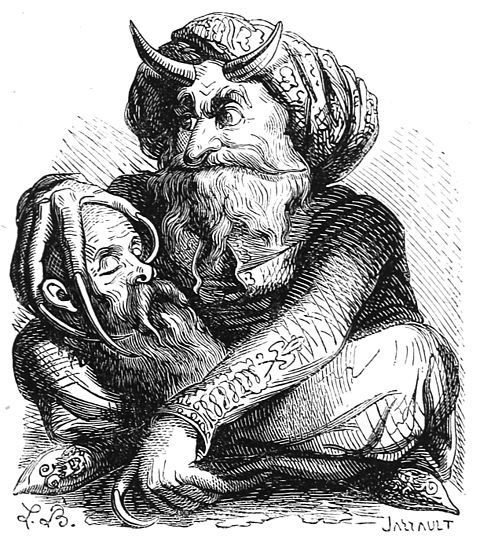
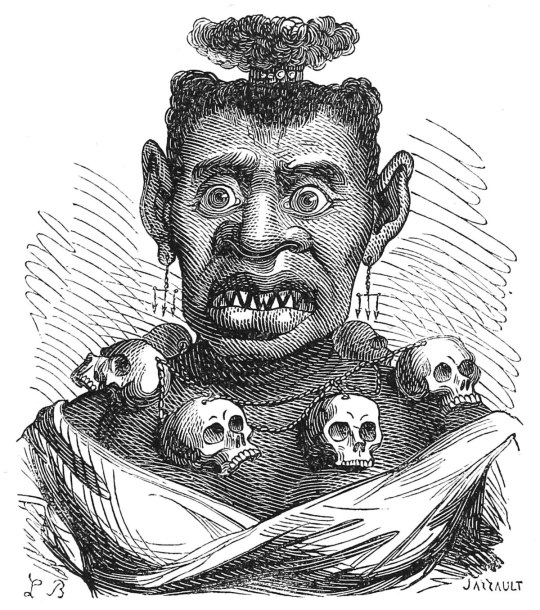
At the very least, they seem to be extremely bastardised and monstrously grotesque misrepresentations of these deities. See these more historically accurate depictions below for comparison:
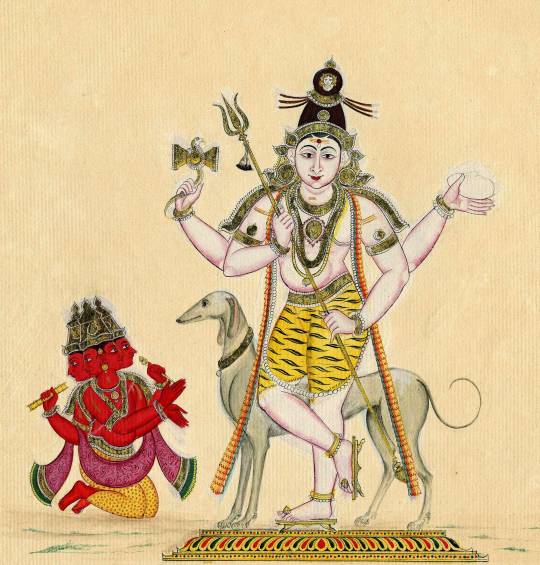
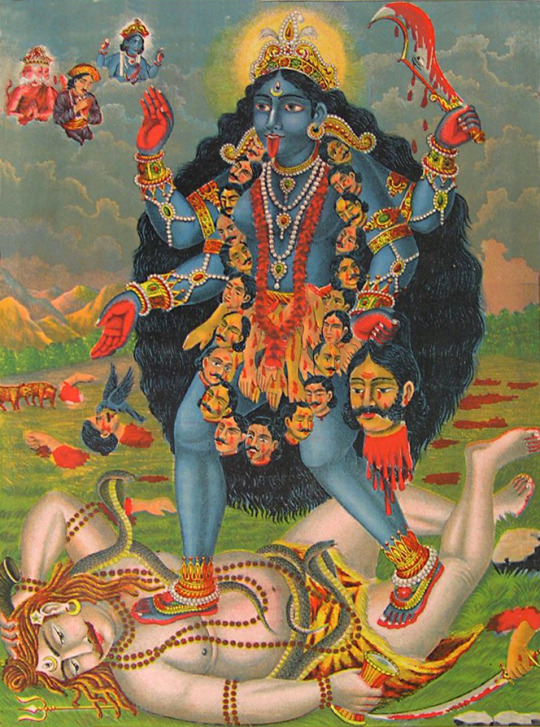
De Plancy also included entries on deities and entities such as Abraxas, Adrammelech, Alastor, Astarte, Chemosh (Chamos), Dagon, Dumuzid (Tammuz), Flaga, Guayota, Hadad (Rimmon), Milcom, Moloch, Nergal, Nibhaz (Nybbas), Nisroch, Pan, Peckols (Picollus), Pluton, Proserpina, Pucks, Rubezahl (Ribesal), Succoth-benoth, Torngarsuk, and many others that were criminally misrepresented and twisted into something they weren't.
It likely only reinforced the idea of deities such as Moloch, Chemosh, Dagan, Adrammelech, and Abraxas being considered Christianised "demons" rather than simply just deities pertaining to other religions and belief systems. Even mere underworld deities tasked with watching over the dead in the afterlife (e.g. Peckols, Pluton, Proserpina, Nergal, Dumuzid) were tainted with the stereotypical Christian idea of Hell; Fire, brimstone, pain, torment, and suffering for all of eternity.
And while some forgotten gods of dying religions might take a liking to being embraced as daemons or daemonic deities worthy of veneration in the context of Daemonolatry (as long as it's done in a respectful manner of course), these deities have still been obscenely misrepresented through the distorted perception of De Plancy's problematic views on other religions.
And that leads us into his similarly skewed views on the Daemonic Divine themselves, which isn't any better...
•──────⋆༺🕸༻⋆──────•
◦──⋆ II ⋆──◦
~ The Monstrous Misrepresentation Of Spirits ~
So not only was De Plancy a racist religiophobe (which was already rather obvious lol), but he was also quite uneducated on daemons as a whole; That is my personal opinion as both a Daemonolatrist and a Daemonologist. Having converted to Catholicism, this likely made his perception and interpretation of daemons extremely biased, because it's quite commonplace for Christianity to depict daemons in a grossly negative light.
They're basically viewed and treated like they're evil incarnate and are frequently scapegoated for most of the world's problems by religious extremists, even in the modern day. As someone who has a lot of love and respect for the Daemonic Divine, these ideas criminally misrepresent the daemons I know and love; And that goes for how they're portrayed in the Dictionnaire Infernal as well.
On top of De Plancy having a warped perception of daemons, he also seemed to have limited knowledge of the Daemonic Divine beyond their grimoire appearances; He didn't seem to have much of a UPG on them (other than the fact that he believed they were literal fallen angels who disobeyed god and were cast out of Heaven as a result), which is probably because he was biased, and didn't care to see daemons in a different perception beyond the Christian interpretation of them being the "villains".
From the thorough research I've done, it seems much more likely that daemons originate from deities pertaining to pantheons of other religions and belief systems, rather than being literal fallen angels. But that's for a whole other post in and of itself.
Aside from deities such as Baal and Astarte already being bastardised into the daemons Bael and Astaroth, as well as being depicted as such in the Dictionnaire Infernal, De Plancy himself also misinterpreted and misrepresented several deities and spirits of other folkloric backgrounds. This is very evident in his "hellish hierarchy" of spirits he considers demons included within his book. He also assigns absurdly inaccurate roles to them too. Here are just a few examples:
Kobal - This is likely a demonisation of both the Kobold sprites of Germanic mythology and the Kobaloi sprites of Greek mythology. Kobolds were commonly considered household spirits who stirred up mischief around the home. In some accounts, they were also known to do chores at night that humans neglected to finish during the day. Kobaloi were said to be impudent and mischievous spirits that were fond of tricking and frightening mortals. They were companions of Dionysus and also had the ability to shape-shift. De Plancy represented these sprites as a singular demon and assigned him with directing theatres and being somewhat of a "stage manager" in Hell.
Nybbas - This is a demonisation of a supposed deity of the Avim called Nibhaz, worshipped during the reigning of Shalmaneser I, mentioned in 2 Kings 17:31 of the Bible. Nibhaz is a rather obscure Mesopotamian deity mentioned in the Bible who was either 1) A deity whose history and mythos has been lost to time, or 2) A deity that likely never even existed in the first place. Thus, there's barely any information on Nibhaz, other than the fact that they apparently appeared in the form of a dog. De Plancy portrayed this deity as a demon under the name of Nybbas, who was in charge of managing the visions and dreams of mortals. He was said to be treated with little respect, and was regarded a "buffoon" and "charlatan".
Nergal - Here's another Mesopotamian deity that was mentioned in 2 Kings 17:31 and later demonised by De Plancy, though, Nergal seems to have a much more pronounced mythos. Nergal was a chthonic god associated with plagues, war, pestilence, death, and devastation. However, he was also said to be a benefactor to mortals; Hearing their prayers, reviving the dead, and protecting agriculture and flocks. He was equated with Irra, a god of war and scorched earth. This is probably why Nergal was later regarded as a "destroying flame" and described as "scorching". De Plancy assigned him with the role of being chief of Hell's "secret police". He is also listed as the first spy under Beelzebub's command who, in turn, is under the surveillance of "the great vigilante" Lucifer. I have absolutely no idea why Hell would even need secret police or where he even got that idea in the first place, but go figure lol. That's De Plancy for ya.
Proserpina - As far as I know, I don't think Proserpina was actually demonised prior to her appearance in the Dictionnaire Infernal. It seems that her entry within the book is the first time she was ever demonised. Proserpina is a Roman goddess (Greek equivalent: Persephone) of fertility, nature, agriculture, vegetative growth, the underworld, and the season of Spring. She is best-known for the myth of her abduction to the Underworld by the chthonic god Hades (Roman equivalent: Pluto). De Plancy includes her in his "hellish hierarchy" where he regards her as an archdiablesse (French for "archdemoness" or "arch-she-devil") and princess of evil spirits. In her grimoire entry within the Dictionnaire Infernal, she is described as being queen of the infernal empire and is associated with serpents and snakes.
Hutgin - This is another case of De Plancy demonising sprites and faeries. Hutgin is likely a demonisation of Hodekin, a kobold or sprite of Germanic folklore. Hodekin was said to be a helpful sprite and somewhat of a familiar spirit who lived with the Bishop Of Hildesheim. Hodekin was said to mainly be a nocturnal spirit and only active at night. He could see into the future and could warn one of problems to come. One of the myths surrounding Hodekin is that he was tasked with watching over the bishop's wife to make sure she remained faithful while he was away. Whenever she tried to cheat on the bishop, Hodekin would step in and assume frightening shapes, scaring the paramours away before the wife could be unfaithful. De Plancy assigns Hutgin with the role of being Hell's ambassador to the country of Turkey (for whatever reason lmao).
I don't really know how De Plancy came to such conclusions regarding daemons, deities, and other spirits; But clearly, a lot of these depictions are not very historically accurate lol. And that leads us into the next section of this post, where the depictions of the Daemonic Divine in particular weren't exactly without error in comparison to their other grimoire appearances.
•──────⋆༺🕸༻⋆──────•
◦──⋆ III ⋆──◦
~ The Inaccurate Depictions Of Daemons ~
A lot of people in occult spaces are likely familiar with Le Breton's illustrations within the Dictionnaire Infernal. However, what a lot of people don't know is that the illustrations and grimoire entries aren't very historically accurate depictions of the Daemonic Divine; That is, when you compare them to the daemons' original grimoire appearances in books such as the Livre Des Esperitz, Fasciculus Rerum Geomanticarum, Liber Officiorum Spirituum, and the Pseudomonarchia Daemonum. From the disparaging illustrated depictions to the bastardised lore, the Daemonic Divine aren't exactly documented so accurately within the Dictionnaire Infernal. Let's delve into some examples:
- - - - - - - - - -

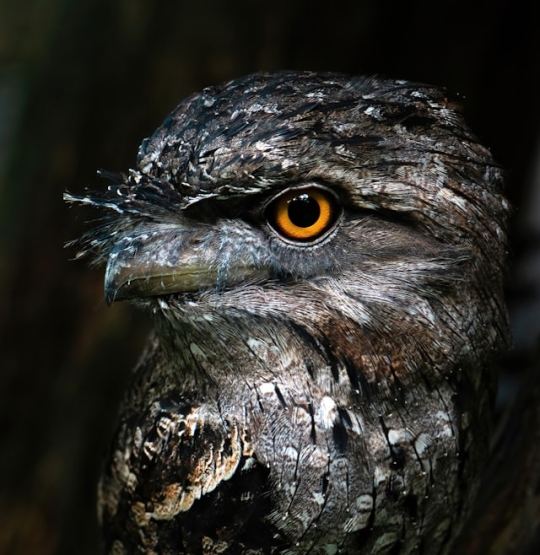
Pruflas (also called Bufas, Suffales, Bulfas, Pruslas, and Busas) is a daemon that appears in the Livre Des Esperitz, Liber Officiorum Spirituum, Pseudomonarchia Daemonum, and the Dictionnaire Infernal.
In the Dictionnaire Infernal, Pruflas is depicted as a man with the head of an owl. But for some reason, his illustration depicts Purson rather than Pruflas (Purson is described as a lion-headed man riding a bear, also being associated with trumpets). Perhaps this was either some sort of error, or De Plancy and/or Le Breton considered Pruflas and Purson to be the same daemon, even though this is not stated anywhere in the Dictionnaire Infernal.
In the Livre Des Esperitz, Pruflas's appearance is not described. In the Liber Officiorum Spirituum, he is said to appear as a spark of fire. In the Pseudomonarchia Daemonum, he is said to appear with the body of a fiery flame and the head of a nighthawk or nightjar (described as "nycticoraci" in the original Latin version).
The term "nycticoraci" or "nycticorax" is translated to "night raven" in English. This term likely originates from Leviticus 11:16 of the Bible, which regards the "night raven" as any bird of ill omen. The specific birds regarded as night ravens mentioned in Leviticus 11 are; Eagles, vultures, black vultures, red kites, black kites, ravens, horned owls, screech owls, gulls, hawks, little owls, cormorants, great owls, white owls, desert owls, ospreys, storks, herons, hoopoes, and bats (even though bats aren't birds lol).
Later, the term "nycticorax" was used to name a specific genus of night herons. It was specifically also used to refer to the best known species, the black-crowned night heron. Given that the term "night raven" can refer to any bird of ill omen in Christianity, this may explain why daemons such as Stolas, Andras, and Aamon are depicted as either being owl-headed or taking on the appearance of an owl.
- - - - - - - - - -
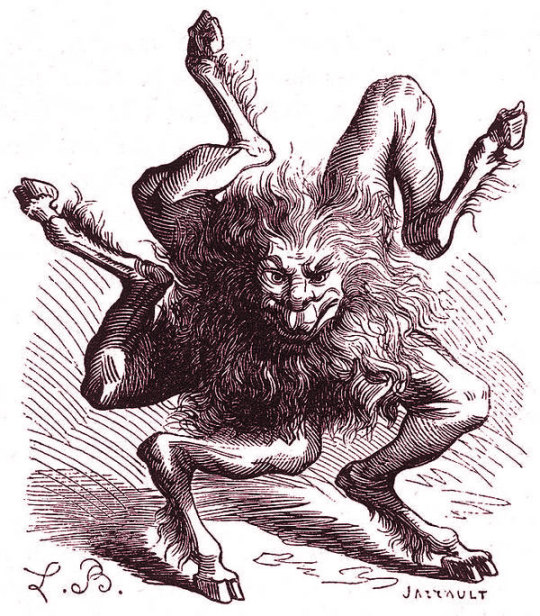

Buer (also called Gemer) is a daemon that appears in the Livre Des Esperitz, Pseudomonarchia Daemonum, Ars Goetia, and the Dictionnaire Infernal.
In the Dictionnaire Infernal, Buer is depicted as appearing in the form of a star or five-pointed wheel. Le Breton's illustration depicts him as a disembodied lion's head with five goat legs, giving him the ability to "walk" or roll in all directions. This is a historically inaccurate depiction of how Buer appears, because he isn't depicted as a quintuple-goat-legged lion head in any of his grimoire appearances whatsoever.
In the Livre Des Esperitz, Buer's appearance is not described. In the Pseudomonarchia Daemonum, he is said to appear in the form of a star. In the Ars Goetia, he is said to appear in the form of a "sagittary" or centaur, specifically when the Sun is in Sagittarius.
Buer is likely a demonisation of Chiron, a superlative centaur from Greek mythology who specialised in healing, medicine, and astrology; Which explains Buer's similar functions and the account of him appearing in the form of a "sagittary" in the Ars Goetia.
- - - - - - - - - -
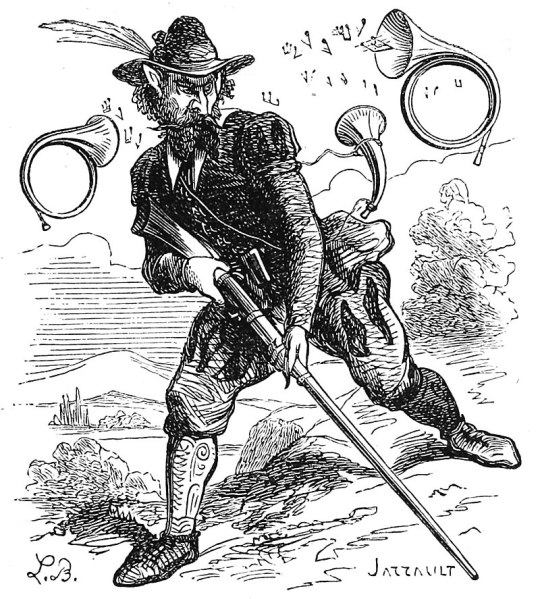
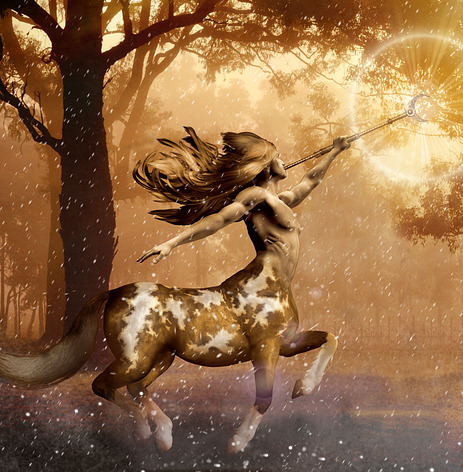
Barbatos (also called Barbates, Barbares, Barbais, Barbas, and Barbarus) is a daemon that appears in the Livre Des Esperitz, Munich Manual Of Demonic Magic, Liber Officiorum Spirituum, Pseudomonarchia Daemonum, Ars Goetia, and the Dictionnaire Infernal.
In his Dictionnaire Infernal illustration, Barbatos is depicted as a bearded hunter wielding a hunting rifle, and he is said to inhabit the forests. In his grimoire entry, he is alternatively said to appear as an archer. He is also compared to Robin Of The Woods (a.k.a. Robin Hood) and Jack In The Green.
In the Livre Des Esperitz, Barbatos's appearance is not described. In the Munich Manual Of Demonic Magic, he is said to appear as a forest archer who is accompanied by four kings carrying trumpets. In the Liber Officiorum Spirituum, he is said to appear in the form of a shouter, forest man, or wild archer. Alternatively, he is also said to appear as a centaur or "sagittary" that is described as being "half-man and half-beast". In the Pseudomonarchia Daemonum, he is said to appear in the form of a woodland archer. In the Ars Goetia, he is said to appear in the form of a "sagittary" or centaur, specifically when the Sun is in Sagittarius; Similarly to Buer.
While his form described in the Ars Goetia is said to be a mistranslation, it's not technically an inaccurate depiction. He appears as a centaur in the Liber Officiorum Spirituum, after all. His depiction as a forest man isn't too inaccurate either, given that Barbatos is possibly tied to the mythical figure Woodwose originating in medieval Europe, and functions similarly.
- - - - - - - - - -
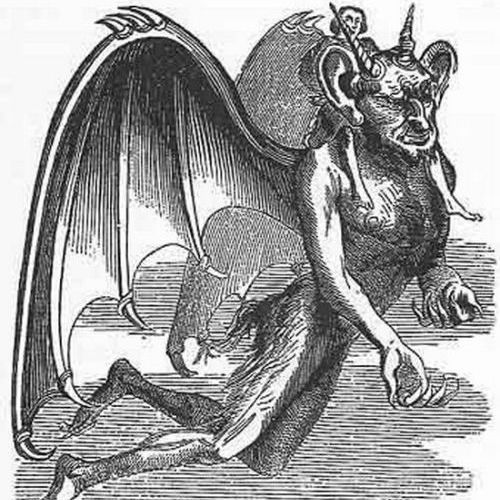

Gaap (also called Tap, Goap, Coap, Taob, Ducay, and Balath) is a daemon that appears in the Livre Des Esperitz, Munich Manual Of Demonic Magic, Liber Officiorum Spirituum, Pseudomonarchia Daemonum, Ars Goetia, and the Dictionnaire Infernal.
In the Dictionnaire Infernal, Gaap is said to appear at noon in human form. But in his illustration, he is depicted as a devil-like figure, or more plausibly, as a man riding upon the shoulders of a devil-like figure. Many people have interpreted this illustration as the demon figure being Gaap himself. But given his Dictionnaire Infernal entry, it's probably more likely that Gaap is the human mounted on the shoulders of the demon-like figure.
In the Livre Des Esperitz, Gaap's appearance is said to appear "very benignly". In the Munich Manual Of Demonic Magic, he is said to appear as a healer that assumes human form, and is also regarded as a doctor. In the Liber Officiorum Spirituum, he is said to appear as a misshapen image. In the Pseudomonarchia Daemonum, he is said to appear in a "meridional sign". In the Ars Goetia, he is said to appear in human form when the Sun is in the Southern signs.
As previously stated, it's likely that many people have interpreted Gaap's illustration as him being depicted as the devil-like figure, instead of the man that is mounted on him. Looking at his other grimoire appearances, it's likely that the illustration was meant to depict Gaap as taking the form of a human mounted on the shoulders of a devil-like being.
- - - - - - - - - -
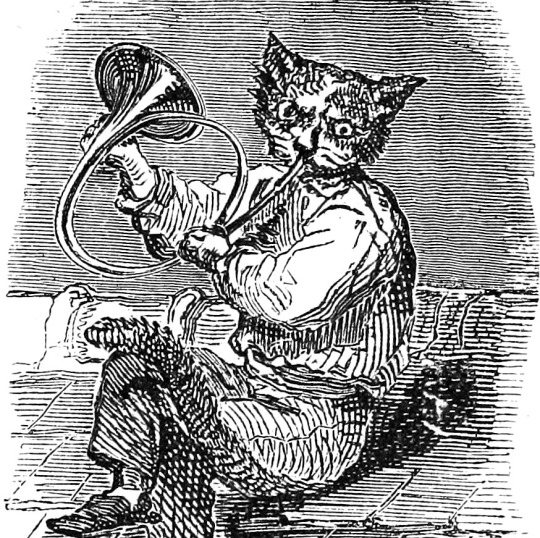

Beleth (also called Bileth, Bilet, and Byleth) is a daemon that appears in the Liber Officiorum Spirituum, Pseudomonarchia Daemonum, Ars Goetia, and the Dictionnaire Infernal.
In the Dictionnaire Infernal, she is said to appear as a "terrible" king riding a white horse, preceded by cats blowing horns and trumpets. However, her illustration seems to depict her as cat-headed person playing a horn, surrounded by dancing mice. Perhaps this illustration was meant to depict one of the horn-blowing cats that precede Beleth? I'm not sure.
In the Liber Officiorum Spirituum, Beleth's appearance is not described. In the Pseudomonarchia Daemonum, she is said to appear furiously, riding upon a pale horse; The sounding of trumpets and the playing of all sorts of other musical instruments are heard before her. In the Ars Goetia, she appears pretty much in the same way as described within the Pseudomonarchia Daemonum.
It's also just my personal UPG that Beleth is a girl lol, as I believe she likely originated from the Mesopotamian goddess Belet-ili. As far as I know, I don't think Beleth is depicted as a woman in any of her grimoire appearances. Her Dictionnaire Infernal entry and illustration don't seem to align either, so it's likely that the trumpet-blowing cat drawing was meant to depict the cats that precede Beleth, rather than Beleth herself.
- - - - - - - - - -
These are just a handful of the inaccurate depictions of the Daemonic Divine and other spirits within the Dictionnaire Infernal. If I were to delve into all of them in great detail, this post would be far too long... So I'm gonna end it there lol.
•──────⋆༺🕸༻⋆──────•
In conclusion, I personally don't advise going to the Dictionnaire Infernal as your sole source of research on daemons; Especially if you're a daemonolatrist. I'd instead recommend looking at their other grimoire appearances, especially the earlier ones. The grimoires I recommend looking into are:
Livre Des Esperitz
Fasciculus Rerum Geomanticarum
Liber Officiorum Spirituum
Pseudomonarchia Daemonum
Ars Goetia
I hope you find this post helpful! And as always, I wish you well on your spiritual path. Also, a big thanks to my friend @sortiarus-de--naturas--daemonum for helping me out with this post! I could not have written this without her. 💜
•──────⋆༺🕸༻⋆──────•
❀༻ Ave Satanas ༺❀

+. Image Sources .+ ... Nightjar Photo ... Centaur Image V1 ... Centaur Image V2 ... Flower Petals Image ... Horse Rider Image ...
#daemonolatry info posts#demonolatry#demonology#demons#dictionnaire infernal#daemonic divine#paganism#daemonolatry#daemonology#pagan#daemons#witchblr#paganblr#daemonblr#infernal dictionary#demonolatry resources
27 notes
·
View notes
Text
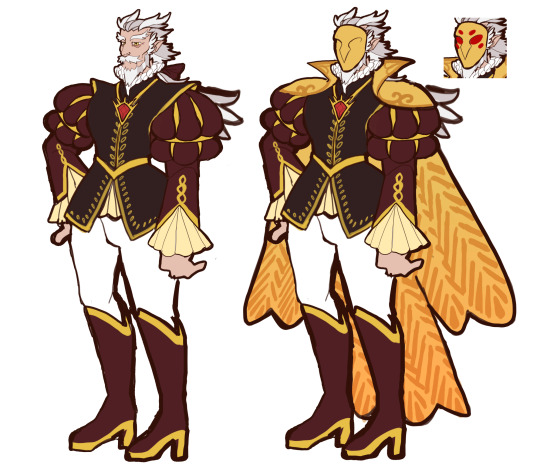

[Custom] Stolas
#artists on tumblr#original character#character design#demon#ars goetia#dictionnaire infernal#stolas#just to clarify this is not h/elluva b/oss related#demonology
31 notes
·
View notes
Text
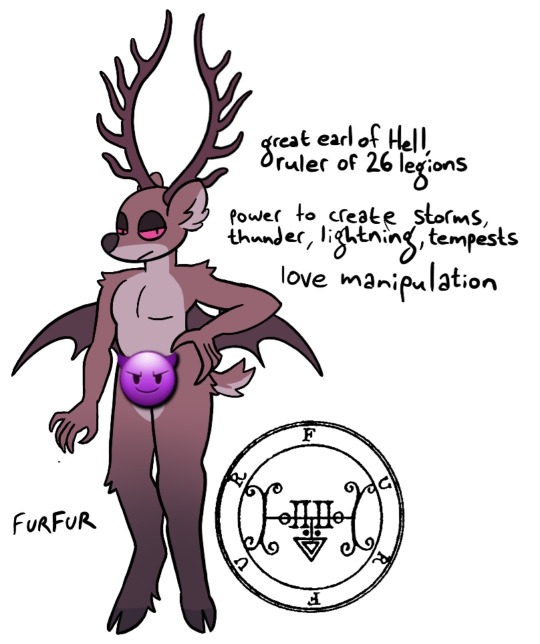
My take on the demon Furfur from the Dictionnaire Infernal
51 notes
·
View notes
Text
The demon illustrations in Dictionnaire Infernal are sometimes so adorable it's hilarious. Like:

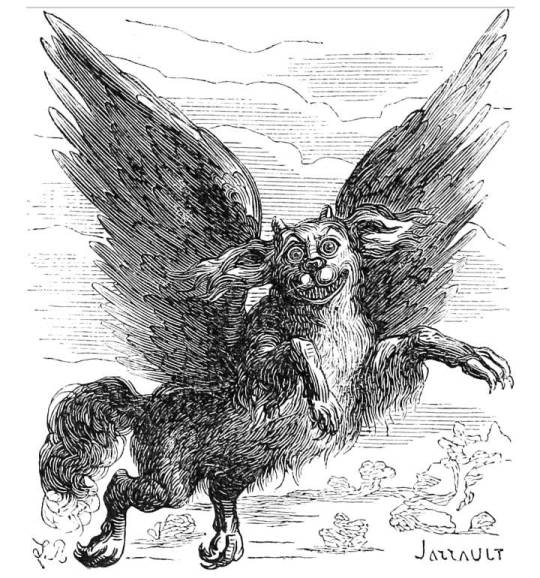
#of course there's also stolas but everyone knows#glasya labolas#czortposting#demon worker#demon work#demonolatry#daemonolatry#spirit worker#dictionnaire infernal#occult#witchblr
61 notes
·
View notes
Text

Inktober Day 17: Demon
Do you want to ride the camel?
15 notes
·
View notes
Text
I have been looking for information about the Goetic Prince Stolas and all I can find is information of the character from Helluva Boss.
I recently started watching that show and I love it. Stolas is a very sensitive character.
BUT he is not the Stolas I seek information on.
It seems like damn near anything concerning Prince Stolas that is NOT about the Helluva Boss character has been taken down. His wiki has disappeared.
There's only one site that I can find that can help me - but I have to become a member. Not sure I want to do that yet.
Are there any Demonolators out there who could possible help me out?
#demonolatry#prince stolas#real prince stolas#not the helluva boss character#demon prince#ars goetia#goetia family#goetia#lesser key of solomon#dictionnaire infernal#i know what books he's in but I don't have them
43 notes
·
View notes
Photo

Malphas, the 209th Known One.
#Malphas#demon#Lemegeton#Dictionnaire Infernal#tower#crow#chimpanzee#monkey#bird#836#octem 105#terra 4#the Known Ones#chimera#creature design#bestiary#monster
336 notes
·
View notes
Text
Jackson's Daily Bestiary #11: Orobas
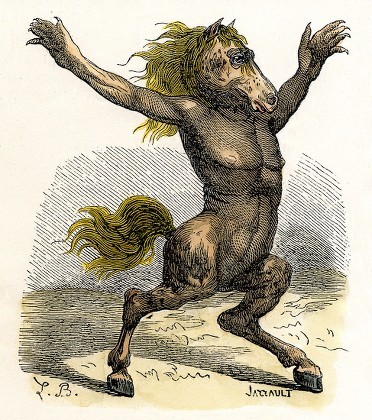
Image credit: https://www.shutterstock.com/editorial/image-editorial/art-various-6051094x
Region of Origin: Israel/Europe
Orobas is one of the 72 demons described in the Ars Goetia, the first part of the demonological grimoire known as the Lesser Key of Solomon. He is listed as the 55th spirit, and is a powerful Great Prince of Hell with command over 20 legions of demons.
He first appears as a horse, but may change into the shape of a man under the conjurer's request. He gives true answers about the past, present and future, as well as divinity, including the creation of the world. He also grants favors and noble titles and can reconcile bonds between the conjurer's friends and even their foes.
Perhaps his most notable trait is his loyalty; he is entirely faithful to his conjurer, as Orobas will never attempt to deceive or harm the conjurer in any way, and will even protect his conjurer from temptation by any other demons. Because of this, Orobas is highly recommendable to summoners who are just starting out.
Sources:
-https://en.m.wikipedia.org/wiki/Orobas
-https://occult-world.com/orobas/
-https://books.google.pt/books?id=tetmEAAAQBAJ&pg=PT5&lpg=PT5&dq=orobas+goetia&source=bl&ots=YuULs24szQ&sig=ACfU3U2l3bbJ70DCL2uw0rvfCn2wftAzAw&hl=en&sa=X&ved=2ahUKEwiHp_fL153_AhVnU6QEHStXBNcQ6AF6BAhUEAI#v=onepage&q=orobas%20goetia&f=false
#jackson's daily bestiary#mythology#folklore#demonology#orobas#ars goetia#dictionnaire infernal#hell#black magic
27 notes
·
View notes
Text
Why I haven't posted anything of my own in over a month.
Me: Hey I really like Pokémon Scarlet/Violet, I want to write cool fan fictions of characters in this universe.
My Brain: Ok, counterpoint, here's a hyperfixation on mythology and demonology that'll last you a month.
Me: Ok fine brain, I do really like the designs from the Dictionnaire Infernal, so maybe I can draw some demons? Andras is pretty underrated.
My Brain: Hmm, that'd be fun, but do you remember when you used to draw fanmade vivosaurs for Fossil Fighters, wouldn't it be really cool to get back to that?
Me: Brain you're right, but I've already got two ongoing projects. I can't keep leaving things before they're finished or I'll get nothing done.
My Brain: Oh WOW, they're making a new ENDLESS OCEAN? That's a THING, from your CHILDHOOD!
Me: Ahhhhhhh stop swapping interests!!!!!
My Brain: REMEMBER SKYLANDERS!?!?!
Bounced through every major interest I have save for Digimon, SCP and Pikmin in a span of about two months lmfao.
#pokemon#fossil fighters#pokemon scarlet and violet#skylanders#dictionnaire infernal#endless ocean#endless ocean luminous#lesser key of solomon#skylanders giants#skylanders spyro's adventure#mythology
6 notes
·
View notes
Text
I did a prosperity ritual with Beelzebub last night. 🪰💰💚 I did this ritual to attract good luck, health, and money to myself, since they are (mostly) what prosperity means to me. 🍀🐐💵 I used the Beelzebub chant I recently posted to empower myself, my pyrite stone, and my perfume. 🌈 As of now, I am currently feeling much better than I’ve felt in recent weeks. ✨ Thank you, Beelzebub, for being so generous with your infernal powers of healing and abundance! 😈💖
I listened to Belzebong as a musical offering. 🤘 Their music always puts me in a groovy mood! ✌️
🖤🪰 Hail Beelzebub! 🪰🖤
🕯️ My Pentagram Instagram 🕯️
#beelzebub#lord of the flies#prosperity ritual#good luck spell#demonolatry#theistic satanism#spiritual satanism#witchcraft#dictionnaire infernal#belzebong#doom metal#metalhead#pyrite#baphomet#hail satan#satanic witch#dark pagan#dark paganism#demons#occult#paganblr#witchblr#left hand path#spirituality#my altar#witch altar#satanic altar
104 notes
·
View notes
Text
My dear witch hunter, why and how do you know how many legions of devils are at Stolas's call?
7 notes
·
View notes
Text
The Dictionnaire Infernal Demon Sigil's aren't all recorded but we sure do have Depiction artwork for every mentioned demon from A to Z:
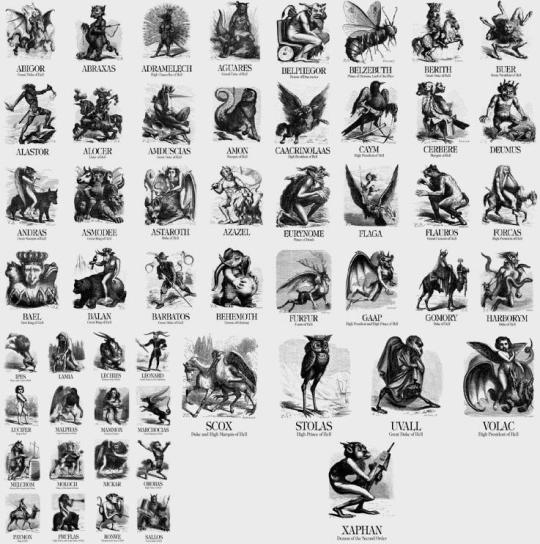
𖤐 Abbadon/Apollyon
𖤐 Abigor/Eligos
𖤐 Abraxas/Abracas
𖤐 Adramelech
𖤐 Aguares
𖤐 Alastor
𖤐 Alocer
𖤐 Amduscias
𖤐 Amon
𖤐 Andras
𖤐 Asmodee
𖤐 Astaroth
𖤐 Azazel
𖤐 Bael
𖤐 Balan
𖤐 Barbatos
𖤐 Behemoth
𖤐 Beleth or Berith
𖤐 Belphegor
𖤐 Beelzebub
𖤐 Bhairava / Beyrevra
𖤐 Buer
⛧ Caacrinolaas
⛧ Cali
⛧ Caym
⛧ Cerbere
𖤐 Deimos / Deumus
⛧ Eurynome / Euronymous
⛧ Flaga
⛧ Flavros
⛧ Forcas
⛧ Furfur
⛧ Ganga / Gramma
⛧ Garuda
⛧ Guayota
⛧ Gomory
⛧ Haborym
⛧ Ipes
⛧ Lamia
⛧ Lechies
⛧ Leonard
⛧ Lucifer
⛧ Malphas
⛧ Mammon
⛧ Marchosias
⛧ Melchom
𖤐 Moloch
⛧ Nickar
⛧ Nybbas
⛧ Orobas
⛧ Paimon
⛧ Picollus
⛧ Pruflas/Busas
⛧ Rahovart
⛧ Ribesal
⛧ Ronwe
⛧ Scox
𖤐 Stolas
⛧ Tap / Gaap
⛧ Torngarsuk
⛧ Ukobach
⛧ Volac
⛧ Xaphan
⛧ Yan-gant-y-tan
⛧ Zaebos
#Dictionnaire Infernal#pagan#joy of satan#spiritual satanism#deumus#satanism#paganism#deumo#dictionnaire infernal#magick#pagan witch#witchcraft#azazel#Lucifer#Beleth#stolas#buer#baal#bael#astaroth#demonology#grimiore#Louis Le Breton#Jacques Collin de Plancy#S. L. MacGregor Mathers#the lesser key of Solomon
8 notes
·
View notes
Text
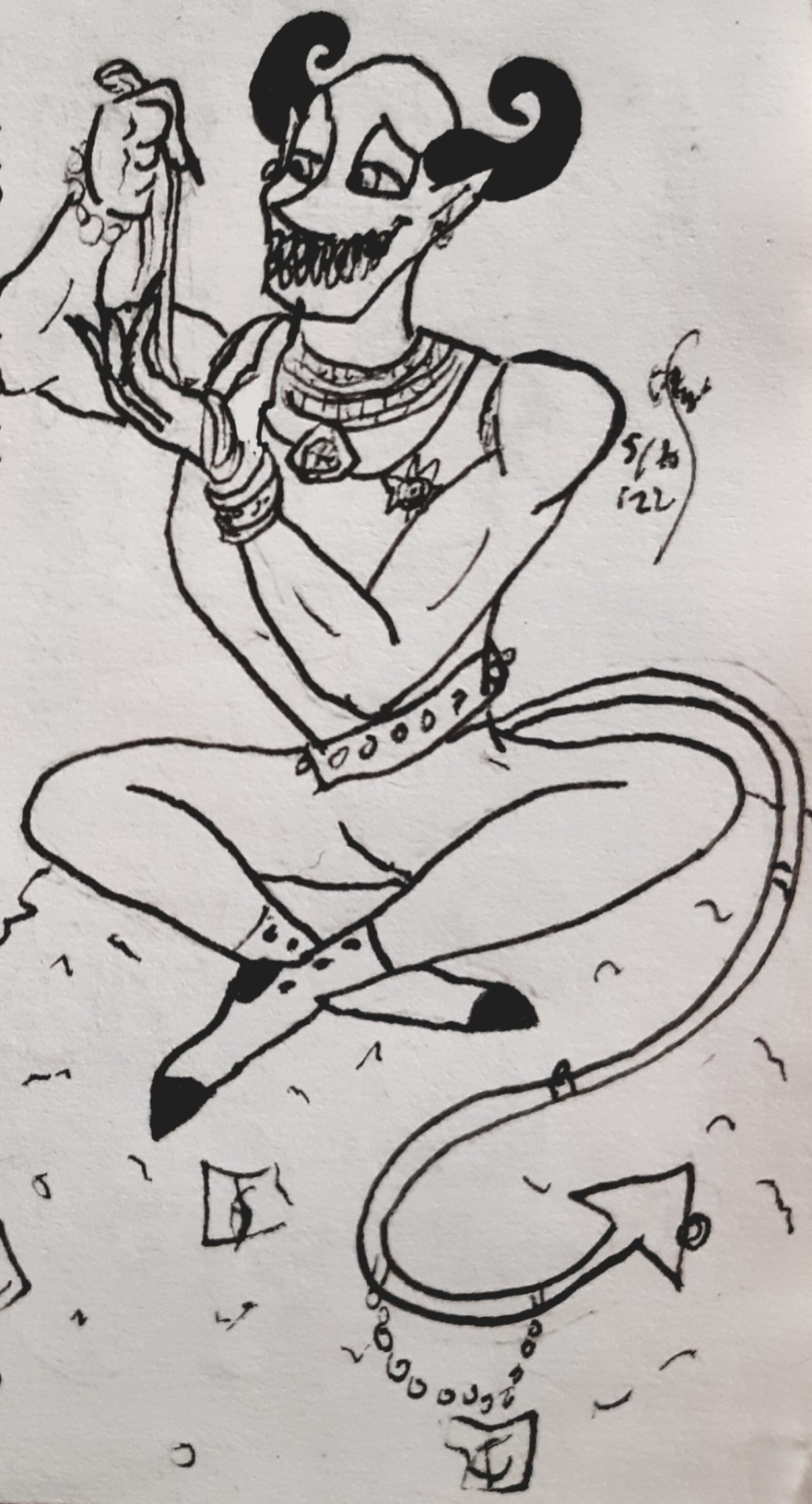
Drawtober day 5 : an Ambassador
In Judeo-Christian religions, every nation has its protector angel. Michael for instance protects Israel people. But they also have a Ambassador demon, who is responsible of the country's misfortunes. Example used : Mammon (Greed, Ambassador of England)
*EDIT*
SO this got bad attention and things were taken out of context SO
1) whenever I post about angels and demons I want to tag things the best I can so I always type "religion"s "angels" or "demons" "christianity" "judaism" and "islam" to make sure nothing is forgotten but it does not mean that the post anf said demon or angel exists in all 3 or is related to only one ; in fact I even add extra tags if the source is more precise such as "dictionnaire infernal" for this post since the hierarchy I am drawing bout comes from it, and if I were to draw, say, the peacock angel Malak Taus one day he woulf be taged as "yezidi"
2) it's not because I mentionned the Jewish people and the demon of Greed in the same sentence it means I am associating both together ! Mammon is one of the 7 sins demons I couldn't not draw him the same way I couldnt help but draw Lucifer and Satan before and will probably draw Beelzebub, Asmodeus and Leviathan too brcause thay are 7 famous demons, the fact I happened to mention Israel or as some said this termination is wrong (and I fixed it, look !) so I should say Jewish people was a way to COMPARE how angels and demons work over nations since Mammon is an Ambassador and I was talking about ambassador demons and Michael.was the one pretecting angel I had in mind at the moment
3) I NEVER implied what was said, that I associate both, that Judaism is Christianity minus Jesus, etc NO everything is a tags misunderstanding and words put out of context ! I am sorry whoever read this read it wrong but NONE of these so called intentions were true ! Last year I did a Drawtober on angels, this year on demons, and to find things more easily and make sure that on the contrary I don't get messages like "HEY YOU FORGOT THIS RELIGION YOU ARE (...)PHOBIC" (but apparently whatever you tag is wrong anyway !) and also because depending of branches and people and microreligions within religions the limit between all 3 can be blurry or nonexistent I use all 3 and it is sad that Tumblr has come to a point this has to be explained
#drawtober#halloween#mammon#the new trinity#ocs#semi ocs#money#jewel#black and white#i made it myself#religion#dictionnaire infernal#Christianity#ambassador#demons
46 notes
·
View notes
Text
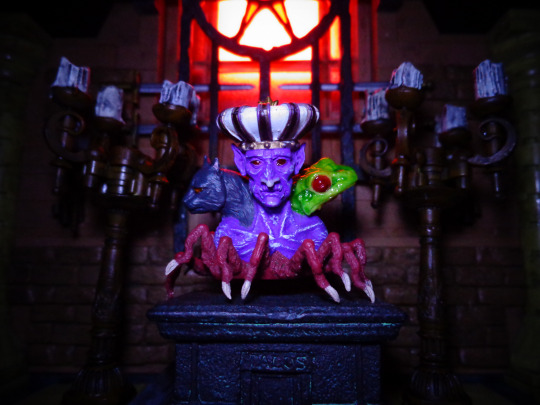
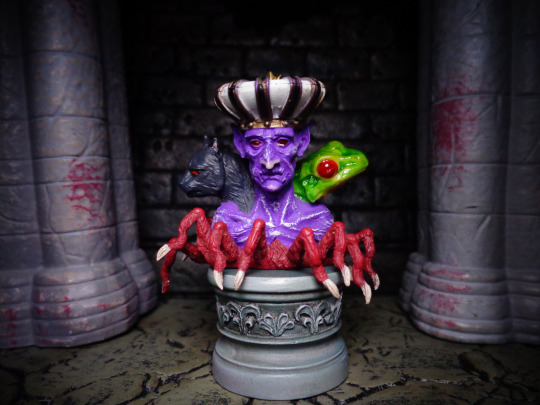



Bael from Yanoman Demon's Chronicle III
Bael (Baal). - The First Principal Spirit is a King ruling in the East, called Bael. He maketh thee to go Invisible. He ruleth over 66 Legions of Infernal Spirits. He appeareth in divers shapes, sometimes like a Cat, sometimes like a Toad, and sometimes like a Man, and sometimes all these forms at once. He speaketh hoarsely. This is his character which is used to be worn as a Lamen before him forth, or else he will not do thee homage.
3 notes
·
View notes